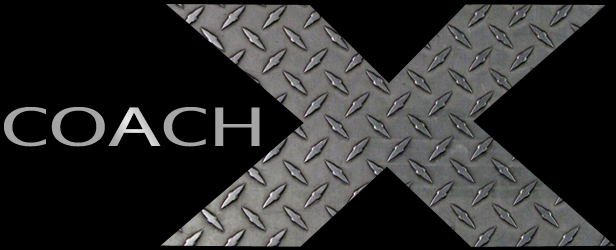
elitefts™ Sunday Edition
Dear Coach Morris,
Where are you currently coaching?
I look forward to your returned presence on the Q&A staff.
In Strength,
Tim Dallinger
I feel like the book Where's Waldo, except this is "Where's Coach X." Unfortunately, I was part of Coach Wannstedt's staff that was unjustly released by the University of Pittsburgh. I am still under contract with them until February of 2013 (I signed a three-year deal after the Washington Redskins came after me). It's amazing how when you are employed everyone wants you. I was offered the Iowa State job with Paul Rhoads, was a finalist for the Green Bay Packers job under Mike McCarthy, and Coach Shanahan of the Redskins flew me to the Senior Bowl to talk and make me an offer. Currently, Monica (my wife) and I just put a down payment on a building in Buffalo, New York, to open up a training facility and personal training center. I do hope to coach again when the opportunity presents itself. My problem is that I am NOT a networker or politician, and at the end of the day, they get the jobs no matter how good they or bad they are. And trust me, since we (James and I) left Pitt, my youngest daughter, Claire, is better than what they have hired, and I don't care if they have a problem with what I just said—after the age of 50 you have the right to get pissy!
Buddy,
It is great to have you back on elitefts.com.
One of the biggest questions I have is on how to properly balance frequency and volume with recovery. Can you provide any basic guidelines?
- Gabe
Gabe,
If your training is the biggest/primary stressor you have to account for, and you are not exceeding your body's capacity to recover, and you aren't beat up or injured, then you can get away with multiple sessions weekly, provided you continue to vary/adjust your loads and volume. You must keep in mind that the eastern block countries, particularly the Bulgarians, selectively choose athletes based on their abilities to handle such stress, and those that achieved the elite level were the survivors of such training. Not every athlete in that type of training survived. This brings me to the one very important point: our ability to handle or survive is specific to the individual. You can train someone for years, slowly increasing the volume and intensity overtime, and I guarantee you that some will make it and others will not. Like you said, Gabe, "you will find out"... It's like the CrossFit fad that has spread so rapidly. The ones who make it to the games are the survivors, and what you don't see are the many who get broken along the way. Good luck in your meet.
Coach Morris-
I have an athlete (defensive tackle) that has recurring stingers. The athlete complains of a deep pain radiating down his neck, through both traps, and into his elbows. He will lose strength in both arms briefly. The initial mechanism was forced hyper-extension of the neck. Do you have a direction, if any, we can take to reduce the recurrence? Thanks for your time.
This issue will be difficult to control during the season. The more it happens, the longer the effects will linger and the muscle with those nerves from that level ( C5-6 I believe) will become weaker due to the repetitive trauma. What diagnostic procedures has the athlete undergone? My first thought for relief is chiropractic care/manipulations to realign the cervical vertebra from the forced hyperextension and the initial injury. This is now a recurring trauma and you have to get a handle on it. Make sure you address the cuff, delts, and biceps. Watch for superior migration of the humeral head. This is a sure sign the cuff is not firing. When shrugging, keep the chin low and as he shrugs up, raise the head. The neck needs to be trained from multiple angles against different resistance paths. Machines are okay, but the use of static work, manual resistance, bands, and hydra fitness makes a great machine that emphasizes concentric-only contractions, making it possible to train the neck four times weekly. Ryan Cizick of Columbia University has done some outstanding research on the neck and actually altered the position for forward flexion. I strongly suggest you also contact him. I know he speaks nationally. At Pitt we trained the neck four times a week and the traps two times a week using different methods and means.
Buddy/Coach X,
With all of the different influences you've had, and I'm sure articles and books you've read, I have a question: Concurrent Periodization or Block Periodization? And why?
Glad to have you back,
Bryan
Dr. Mann,
Here's my thoughts on block periodization and why I don't use it for team sports. For motor learning, yes. Bio energetically, no. Team sports add technical and tactical complexity, making them more challenging! Block periodization (issurin) is good for rowing, swimming, and some track and field. This is why I prefer Charlie Francis' Vertical Integration, which is quasi-block training. Allan DeGennaro and I have talked about this extensively.









